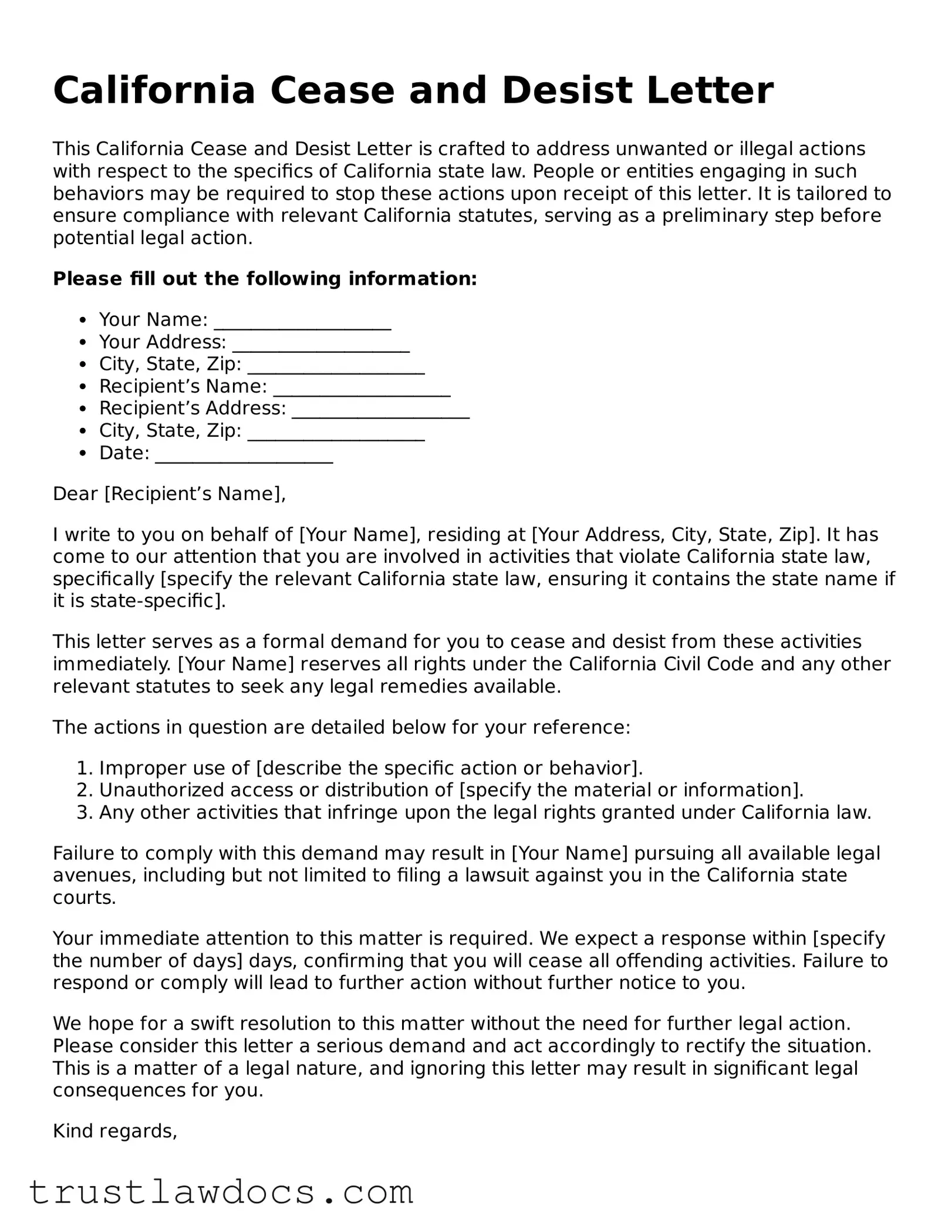What is a Cease and Desist Letter in California?
A Cease and Desist Letter in California serves as a formal request to stop any alleged illegal activity. It is a preliminary step before potentially filing a lawsuit. The letter aims to resolve disputes without court intervention by notifying the party or parties involved of your legal rights and their infringement.
When should I use a Cease and Desist Letter?
You should use a Cease and Desist Letter when you believe someone is infringing upon your rights or property without authorization. This could involve scenarios such as copyright or trademark infringement, harassment, or breach of contract. The letter acts as an official notice for the infringer to cease their harmful activities immediately.
Is a lawyer required to send a Cease and Desist Letter in California?
No, a lawyer is not required to send a Cease and Desist Letter in California. Individuals can draft and send the letter themselves. However, consulting with a lawyer can ensure that the letter accurately addresses the legal issues and makes a stronger impact on the recipient.
What should be included in a Cease and Desist Letter?
A Cease and Desist Letter should include a clear description of the alleged wrongful activity, a statement of your legal rights, a demand for the activity to stop, and a deadline for compliance. It may also suggest potential legal action if the situation is not resolved by the specified deadline.
How legally binding is a Cease and Desist Letter?
While a Cease and Desist Letter itself is not legally binding, it serves as a documented notice of a dispute and your intent to pursue legal action if the issue is not resolved. It can be used as evidence in court to establish that the recipient was aware of the infringement and failed to cease the offending activity.
Can I send a Cease and Desist Letter electronically?
Yes, a Cease and Desist Letter can be sent electronically, such as through email. However, sending a physical copy via certified mail provides proof of delivery and ensures the recipient receives notice of the demand to cease the offending activity.
What happens after I send a Cease and Desist Letter?
After sending a Cease and Desist Letter, the recipient may comply with the demand, respond with a letter of their own, or ignore it altogether. If the recipient does not comply or respond, you may consider taking legal action to enforce your rights.
Can a Cease and Desist Letter be ignored?
While the recipient of a Cease and Desist Letter can choose to ignore it, doing so exposes them to potential legal action. Ignoring the letter demonstrates a disregard for your legal claims, which may be unfavorable to them if the matter proceeds to court.
How effective is a Cease and Desist Letter?
The effectiveness of a Cease and Desist Letter depends on several factors, including how well the letter is drafted and the seriousness of the allegations. In many cases, receiving a formal letter is enough to prompt the recipient to cease the infringing activity. However, its effectiveness can also depend on the recipient's willingness to dispute or comply with the demand.
How can I ensure my Cease and Desist Letter is taken seriously?
Ensuring that your Cease and Desist Letter is taken seriously involves clearly articulating the facts, specifying the legal grounds of your claim, and demonstrating a readiness to pursue legal action if necessary. Consulting with a lawyer to draft or review the letter can also add a level of professionalism and seriousness to your demands.
